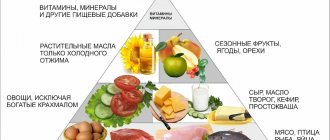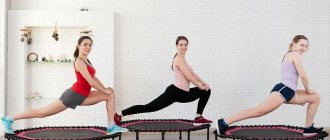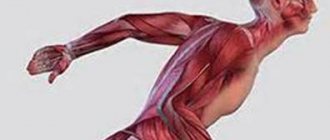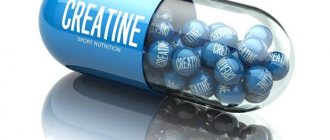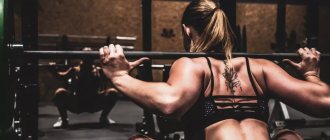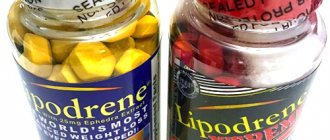What is this
Leg press (or platform press on a machine) – basic , i.e. multi-joint (hip, knee and ankle joints are involved) exercise for the leg muscles in the simulator at an angle of 45 degrees, which consists of bending and then extending the legs.
As a rule, big, pumped up guys treat this exercise on a machine with “coldness”, assuring that the squat is a much more important exercise for mass growth. Well, let's find out!
How much does the exercise platform weigh?
This is an interesting but difficult question, because... Manufacturers do not indicate the empty weight of the bench press, and it is not standardized. Let's give examples: the weight of the platform of the BT-202 simulator is 60 kg, in some gyms trainers talk about 25-30 kg.
However, do not rush to rejoice and add these 60 kilos to your working weight. The fact is that the load in simulators in which the movement is performed at an angle to the base (in this case it is 45 degrees) will be calculated as follows: the sine of this angle, i.e. 0.7, multiplied by the weight of the platform - i.e. from 60 kg. you will get a load of 42 kg, from 30 - 21.
What muscles work
The platform press can be performed in three positions, which will differ in the angle of inclination and, accordingly, in the targeted muscles. What does each of them download?
In a classic simulator at an angle of 45 degrees
This is the good old incline leg press (or, as they also say, incline), with a 98% probability this is exactly what you should do in your gym. It is easy to use, versatile and extremely popular among gym goers.
There won’t be much of a surprise here, but we will additionally note which muscles do not work in this machine: this is where the special benefit of the platform press lies. So, the exercise is designed to strengthen:
- on the anterior biceps of the thigh,
- inner and back thighs,
- gluteal muscles.
In addition, we would like to add that the leg press involves the hip, knee and ankle joints.
In vertical
Street leg press machine
In addition to the classic leg press at an angle, there is also a vertical horizontal platform bench press. This is a not very well known variation that is extremely rare to find in the gym. With a vertical leg press, the platform is perpendicular to your body. The movement is carried out in a short amplitude.
This allows you to isolate the load on the lower part of the quadriceps (teardrop muscle), which will make the leg bulkier in the lower thigh, closer to the knee.
If you need just such a load, then you can perform this exercise in a Smith machine; for normal execution, you only need the help of an experienced partner who will open and close the safety mechanisms.
Sitting
Or horizontal leg press. A more common option than the previous one, but not as much as the classic one. The exercise is also a basic one; the main movement in it is the push. It is usually used to work the muscles of the anterior thigh.
So, what muscles are involved:
- main – quadriceps (quadriceps femoris muscle),
- synergists – gluteus maximus, adductor magnus, soleus,
- dynamic stabilizers – hamstrings, calf.
What muscles are involved in the bench press?
The bench leg press works the front and back muscles of the thigh. And also the gluteus maximus muscle.
Front thigh: quadriceps.
A muscle that is involved in leg extension at the knee. It is located on the front of the thigh. The leg press uses all the quadriceps muscles, namely its 4 heads. Such as:
- The rectus femoris muscle is the longest head of the quadriceps. Is a knee extensor and hip flexor
- The latissimus intermedius extends the tibia at the knee joint
- The vastus medialis muscle is also involved in extension of the tibia at the knee joint
- The vastus lateralis muscle is located laterally, on the outside of the front of the thigh. Like all other muscles, it helps to extend the leg at the knee
Back of the thigh: biceps femoris.
Its main function is to flex the tibia at the knee joint. It is located on the back of the thigh. Consists of two heads, long and short.
Gluteus maximus muscle
The large muscle of the pelvis occupies almost its entire surface. It gives shape and appearance to the buttocks. Its functions: support the body in a standing position. Extension of the torso after bending forward. Rotates the thigh outward and participates in its extension.
Adductor muscles of the thigh
This is a muscle group that is responsible for bringing the hips towards each other. It includes: thin, long, short, adductor magnus and pectineus muscles.
Abductor muscles of the thigh
This is the same group of small muscles that are involved in moving the hips away from each other. It includes: the gluteus medius and minimus, the obturator internus, the twins and the tensor fascia lata muscle.
Efficiency
- Simple, clear technique. Everything is extremely transparent and understandable. In terms of technique, this exercise is much simpler than squats with a barbell; of course, in terms of effectiveness it lags behind them, but not by much. It is always easier for beginners to learn how to do a leg press than to learn how to squat correctly.
- Great variability. There are several variations of the leg press, in which, with different leg positions, the emphasis shifts to different muscle groups.
- Improved blood flow. When performing a leg press, blood circulation in the pelvic organs increases, which leads to the production of testosterone, which is necessary for muscle growth and improved blood flow to the female organ (and as a pleasant bonus, it also stimulates libido
